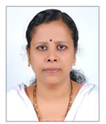Agricultural Research Station, Thiruvalla
About the Centre
AICRP on sugarcane, Thiruvalla centre comes under the administrative and territorial jurisdiction of Kerala Agricultural University. It is situated on the banks of Manimala, a tributary of the Holy River Pamba at Kallunkal in Nedumpuram Grama panchayth, 5 km from the Thiruvalla town, Pathanamthitta district, Kerala. Latitude (9021o24' N), longitude (76033o41' E) and altitude (9.5MSL). In this region, sugarcane is cultivated in the river banks of the rivers viz., Pamba, Manimala, Achancoil and Meenachil. The tract is prone to inundation during south west and north east monsoons. Sugarcane varieties cultivated in the region are capable of withstanding this natural constraint and it is the ideal crop where most of the other crops fail. In the region, sugarcane is cultivated without the use of pesticides/ fungicides. So the practice as such is most ecofriendly also. The centre is having a pleasant and more or less equable climate throughout the year, the monsoons (June-September & October-November) and the summer (February-May) are the seasons experienced with a slight drop in temperature from the normal range of 28-32oC during winter. The centre receives an annual rainfall of 3000 mm. September to March is the best season to visit the centre. The famous Sabarimala Sri.Ayyappa temple is situated in the same district. Kumarakom, one of the most popular tourist centres in Kerala blessed with vast and extensive back waters and Alappuzha, the Venice of the East and are only of one hour driving distance from the centre. Here one can enjoy the serenity of back waters, the palm fringed canals and shores bustling with glimpses from the day to day life in the country side, the mirror still lagoons, picture book lakesides and its long sandy beach. Journey in Kerala house boat which is a unique speciality of the region makes the trip unforgettable by providing ample opportunities to enjoy the beauty, greeneries and scenaries of Kerala.
Contact Details:-
|
|
| Smt. Jinsa Nazeem Assistant Professor (Entomology) Mob: 7736092009 jinsa.nazeem@kau.in jinsashiju@gmail.com |
Achievements
Varieties -Recommended for Flood prone and garden land situation of Kerala
- MADHURI (Co Tl 88322) – Midlate variety with average cane yield of 120.52 t/ha, sugar yield (CCS) of 12.94 t/ha and jaggery production of 13.69 t/ha with moderately resistant reaction to red rot disease
- MADHURIMA (Cul 527/85) – Midlate variety with average cane yield of 125.1 t/ha, sugar yield (CCS) of 13.5 t/ha and jaggery production of 14.57 t/ha with moderately resistant reaction to red rot disease
- MADHUMATHI (Co 88017) – Midlate variety with average cane yield of 125.32 t/ha, sugar yield (CCS) of 13.90 t/ha and jaggery production of 15.70 t/ha with moderately resistant reaction to red rot disease
- AROMAL (CoTl 1153) – Midlate variety with average cane yield of 118.61 t/ha, sugar yield (CCS) of 15.53 t/ha and jaggery production of 15.55 t/ha with moderately resistant reaction to red rot disease
- ABHAY (CoTl 1358) – Midlate variety with average cane yield of 120.17 t/ha, sugar yield (CCS) of 15.67 t/ha and jaggery production of 14.80 t/ha with moderately resistant reaction to red rot disease
Varieties -Recommended for garden land situation and semi arid tracts of Palakkad district of Kerala
- THIRUMADHURAM (Cul 57/84) – Midlate variety with average cane yield of 106.47 t/ha, sugar yield (CCS) of 10.21 t/ha and jaggery production of 10.81 t/ha with moderately resistant reaction to red rot disease
Production Technology
- Study on scheduling irrigation with mulch under different sugarcane planting methods revealed that the growth and yield attributes recorded in furrow planting at 120 cm spacing with alternate skip furrow irrigation after earthing up+ green manure/brown mulching was significantly superior to other planting methods and mulch practices tried. The maximum cane length (262.56 cm), cane diameter (3.18 cm), single cane weight (1.56kg), MCC (82000 nos./ha), cane yield (101.00 t/ha),and sugar yield(9.47t/ha) were recorded by this treatment. With regard to irrigation schedule, the highest value for cane length (259.92 cm), cane diameter (3.10 cm), MCC (77020 nos./ha), cane yield (81.55t/ha),and sugar yield(7.994t/ha) were recorded by IW/CPE ratio -1.00
- The interaction effect was significant for cane length, MCC, cane yield and sugar yield and the maximum values were recorded by the treatment combination of Paired row trench planting (30:120 cm row spacing) without mulch and 1.00 (IW/CPE) (260.94 cm, 88250 nos, 111.27t/ha and 10.90 t/ha respectively).
- Alternate furrow with trash mulching could economise the use of irrigation water to the tune of 41 per cent during the formative phase of spring planted sugarcane as compared to all furrow irrigation with trash mulching.
Other Major interventions
- The whole agrotechiques for the cultivation of sugarcane in Kerala state is either developed or standardized by the centre
- Standardized various agrotechniques for the newly released varieties.
- Gained Geographical Indication Registration for Central Travancore Jaggery (Certificate No. 538).
- Standardised methodologies for the production of different forms of jaggery viz., Pani (liquid), Pathyian (semisolid), Unda and Cube (solid) as well as Podi (powder) and method of packing (pet jar and polythene-polyester laminated covers) and presented the product in marketable quantity weighing 1,2,4 & 6 Kg respectively.
- Materialization and popularisation of partial mechanisation to combat labour shortage in sugarcane farming.
- Continous survey and monitoring of pest and disease in sugarcane in the state is conducted by the centre


